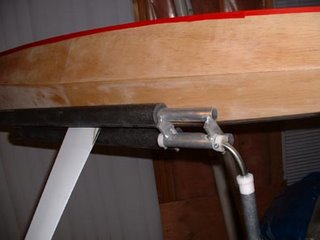Boat Plans Butler
From: Philgeren@aol.com
Sender: Star45@yahoogroups.com
Date: Wed, 22 Nov 2006 06:58:53 EST
Subject: Re: [Star45] Curved mast -- advantage ??
Curving a mast so that it bends convex forward (concave aft) moves the luff edge of the sail forward and reduces the camber of the sail in the section where the mast is bent (if bent half way up the mast, the camber in the up/down center of the luff of the sail is reduced). In a blow, this reduces power, reduces leeway force, reduces weather helm, allows the boat to increase its speed.
Generally, the minimum position of mast bend is considered to be a curve equal to the luff curve designed into the luff edge of the mainsail. For very light air and for heavy air, maximum mast bend is used for maximum speed. For very light air, less camber makes it easier for air to stay attached to the leeward surface of the mainsail as the air passes aft. For medium air and for waves, where maximum power equates to maximum speed, minimum mast bend is used to get maximum designed camber.
By use of all the tuning controls on a mainsail, one can obtain a certain amount of control over the distribution of camber over the length of the mast, and there will be an optimum camber distribution for any particular sail and set of wind conditions. Pretty complicated to get it perfect, however outstanding sailors like Stuart Walker are on record as saying it is of paramount importance to use this against competitors who are using it. Otherwise, in a one-design competition they win.
My two cents.

Do you find information about Boat Plans Butler are you looking for? If not, below may help you find more information about the Boat Plans Butler. Thank you for visiting, have a great day.


